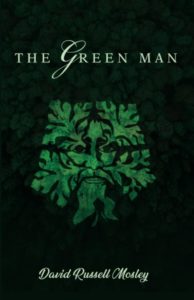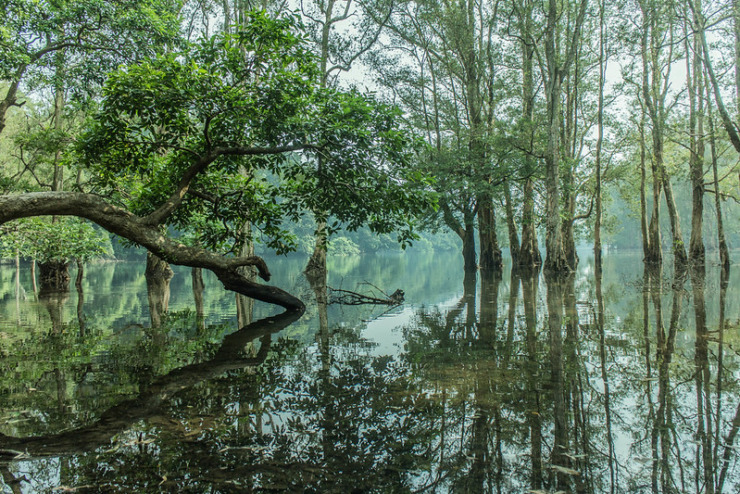David Russell Mosley’s Encounter
David Russell Mosley tells the story of his original encounter with the Green Man in 2012. With a group of friends, he was visiting a theologian in Southwell, not far from Nottingham in England. The theologian took the group on a tour of the town, including the cathedral. The chapter house dates to the 10th or 11th century; much of the cathedral dates to the 17th century. The architectural details of the buildings included “foliate heads,” an idea incorporated into many British churches and cathedrals prior to the Reformation.
It wasn’t until 1939 that the familiar foliate head was called the “Green Man,” in an article written for the journal Folklore. The Green Man was an ancient pagan symbol for nature and rebirth, and the image had made its way into Christianity. The foliate head can be found today in numerous churches and cathedrals.
Mosley was taken with the image, but he filed it away in his mind for years, until, like many ideas, it began to force its way out of his head and on to the written page. The Green Man is a collection of 63 formal, and beautiful, poems about the seasons, nature, the church, saints, and creation.
Here is a villanelle about autumn, which also suggests connections to the idea of the Green Man.
Autumn is a Jovial Man

Bringing with him sleep and death,
But Autumn is a jovial man.
He comes festooned with wild plans,
To celebrate before Winter’s breath,
The old man comes in red and tan.
Ripened food he stores and cans,
And makes the leaves a harvest wreath
For Autumn is a jovial man.
His bag is filled with roasts and hams
To make up his autumnal feast.
The old man comes in red and tan.
He brings the sleep only he can,
The festive sleep before our death,
For Autumn is a jovial man.
He kills us only to come back again,
The eastern Sun setting in the West.
The old man comes in red and tan.
Old Autumn is a jovial man.

David Russell Mosley
The poems evoke moving and often striking images: young King Alfred weeping because he wants to hear the trees again, the Green Man unbending in the gales while the rest of us have forgotten our lessons from Nature, a heartfelt prayer for the knowledge of healing from St. Hildegard, feeling “lost in the darkness of the night.” One senses the idea of loss and hope—the loss of connectedness, the loss of co-existing with nature, the inability to “hear” or even see the stars but still knowing they are there. Yet, the Green Man is there, abiding, waiting, ready to appear and act when it’s his time.
Mosley is dean of Academics at the Chesterton Academy of Notre Dame in Spokane Washington. He received a Ph.D. degree in theology from the University of Nottingham in the United Kingdom and is the author of On the Edges of Elfland, a faërie romance; and Being Deified: Poetry and Fantasy on the Path to God. He is currently working on a poetry collection based on The Divine Comedy by Dante.
To read the poems of The Green Man is to walk in ancient paths, paths that lead through Nature but also through the Church. What Mosley says here is that ancient traditions are important, and more than that, they are as much with us as any of our modern conveniences and technologies.
Photo by Kelvin YC, Creative Commons, via Flickr. Post by Glynn Young.
How to Read a Poem uses images like the mouse, the hive, the switch (from the Billy Collins poem)—to guide readers into new ways of understanding poems. Anthology included.
“I require all our incoming poetry students—in the MFA I direct—to buy and read this book.”
—Jeanetta Calhoun Mish
- Longfellow’s “Paul Revere’s Ride”: Creating a National Legend - April 17, 2025
- Poets and Poems: Katie Kalisz and “Flu Season” - April 15, 2025
- Poets and Poems: Michelle Ortega and “When You Ask Me, Why Paris?” - April 10, 2025


Leave a Reply